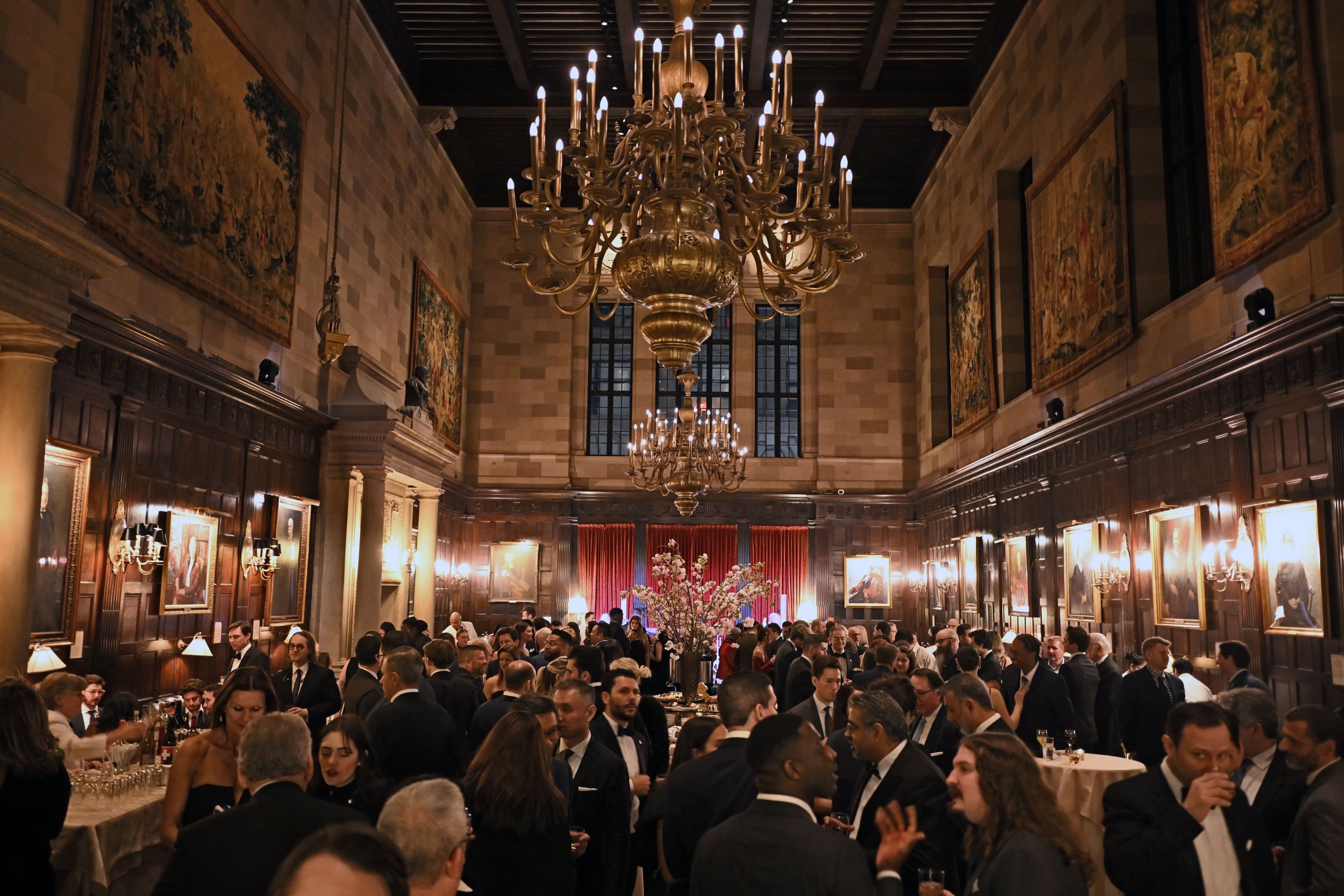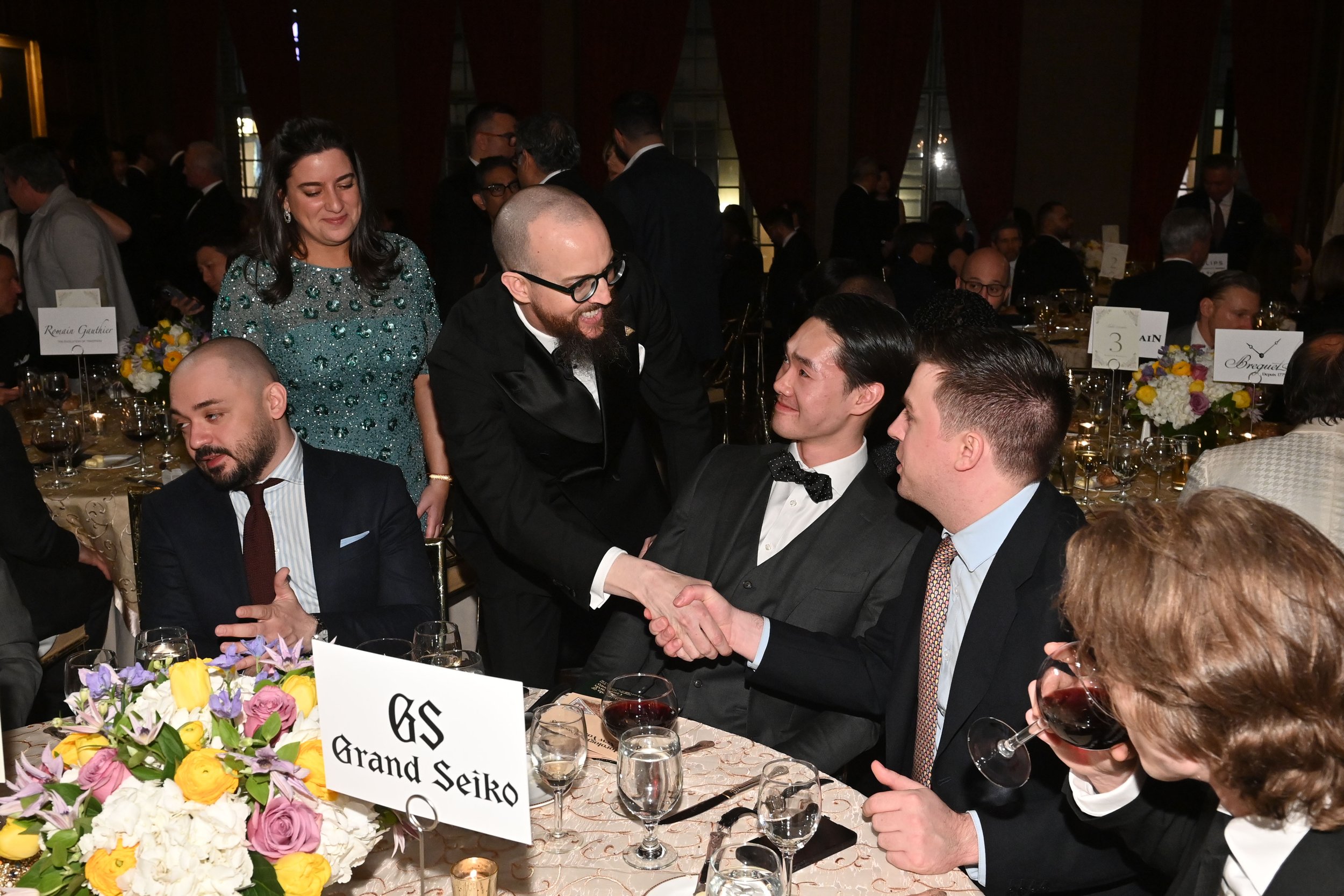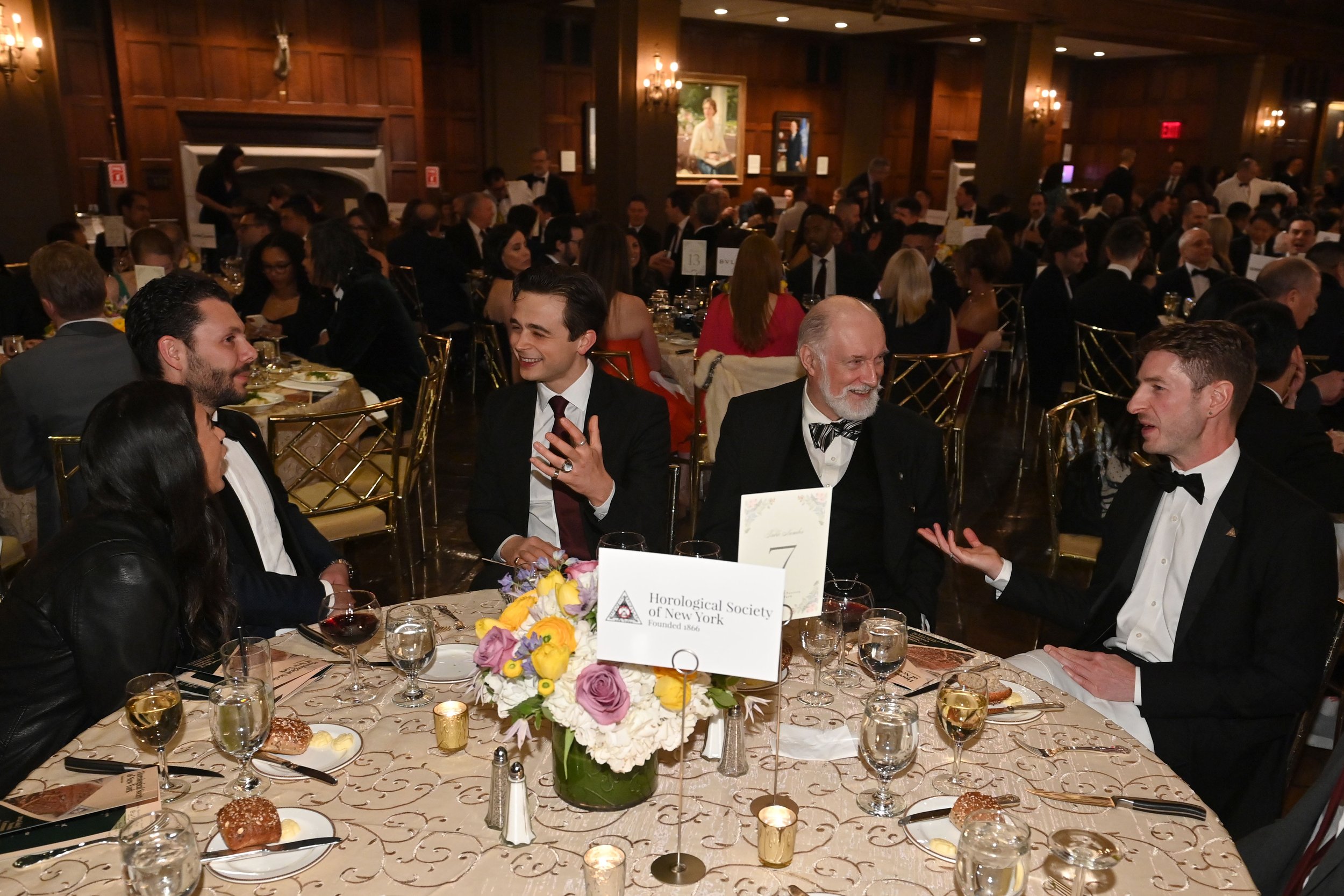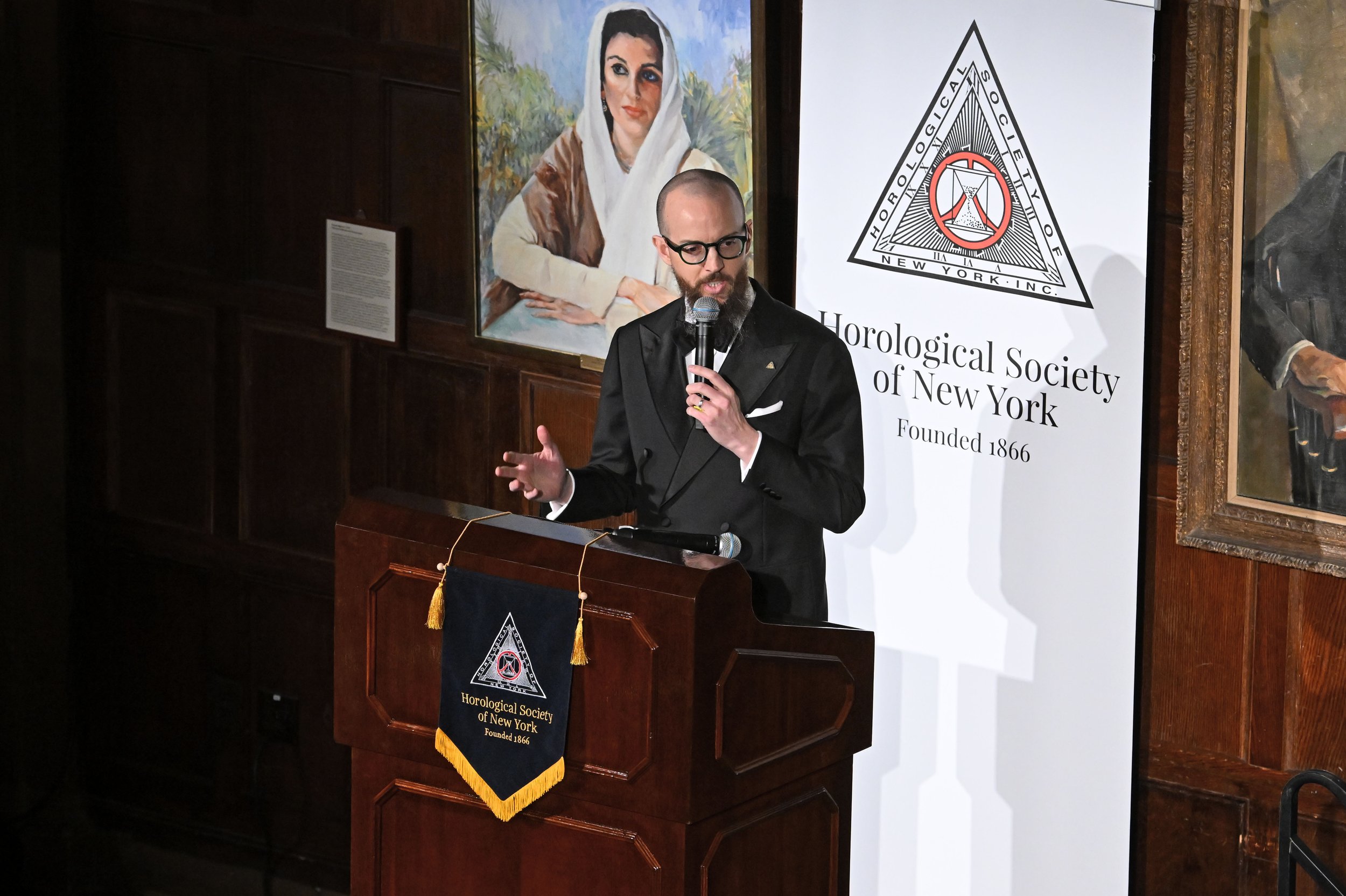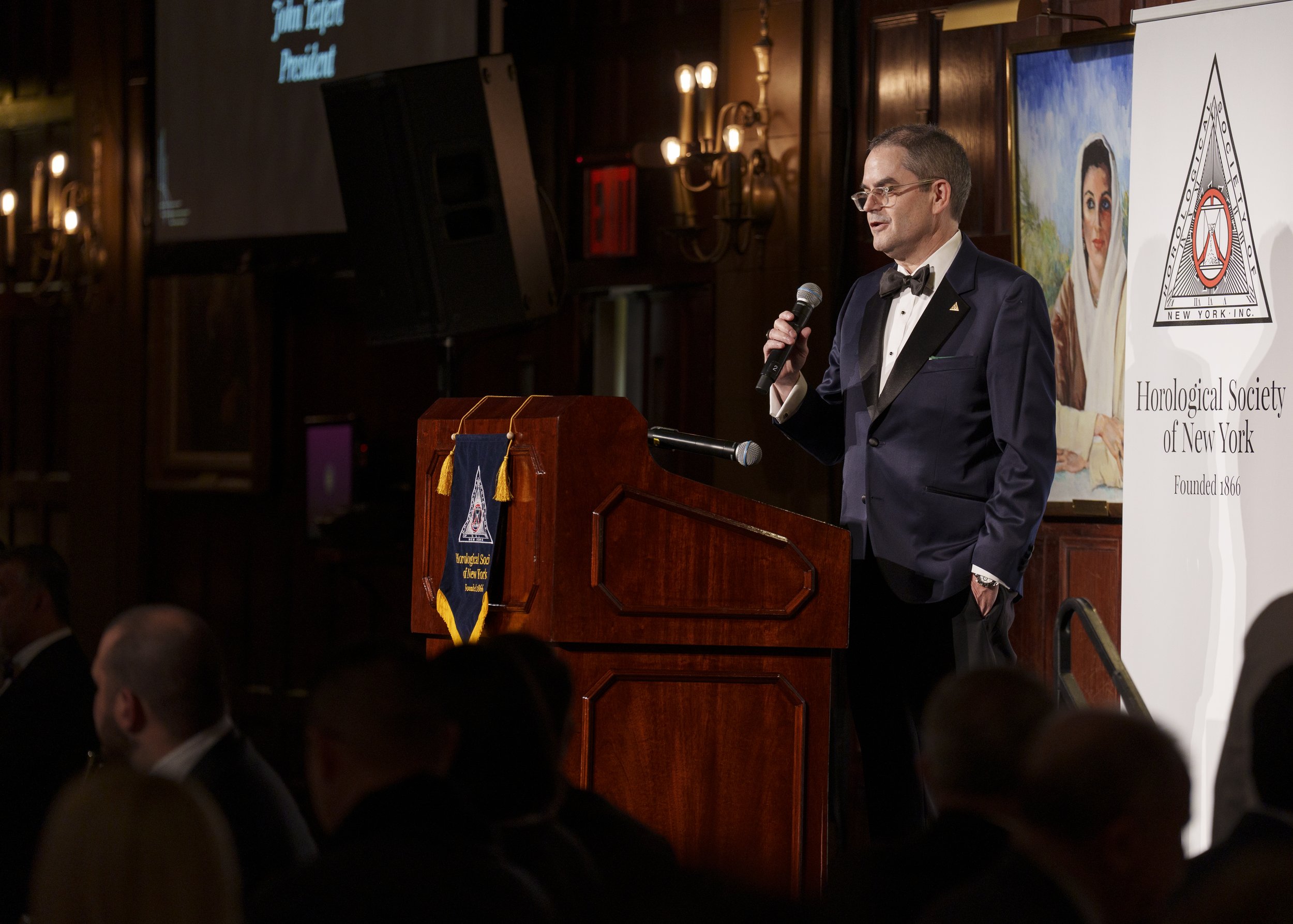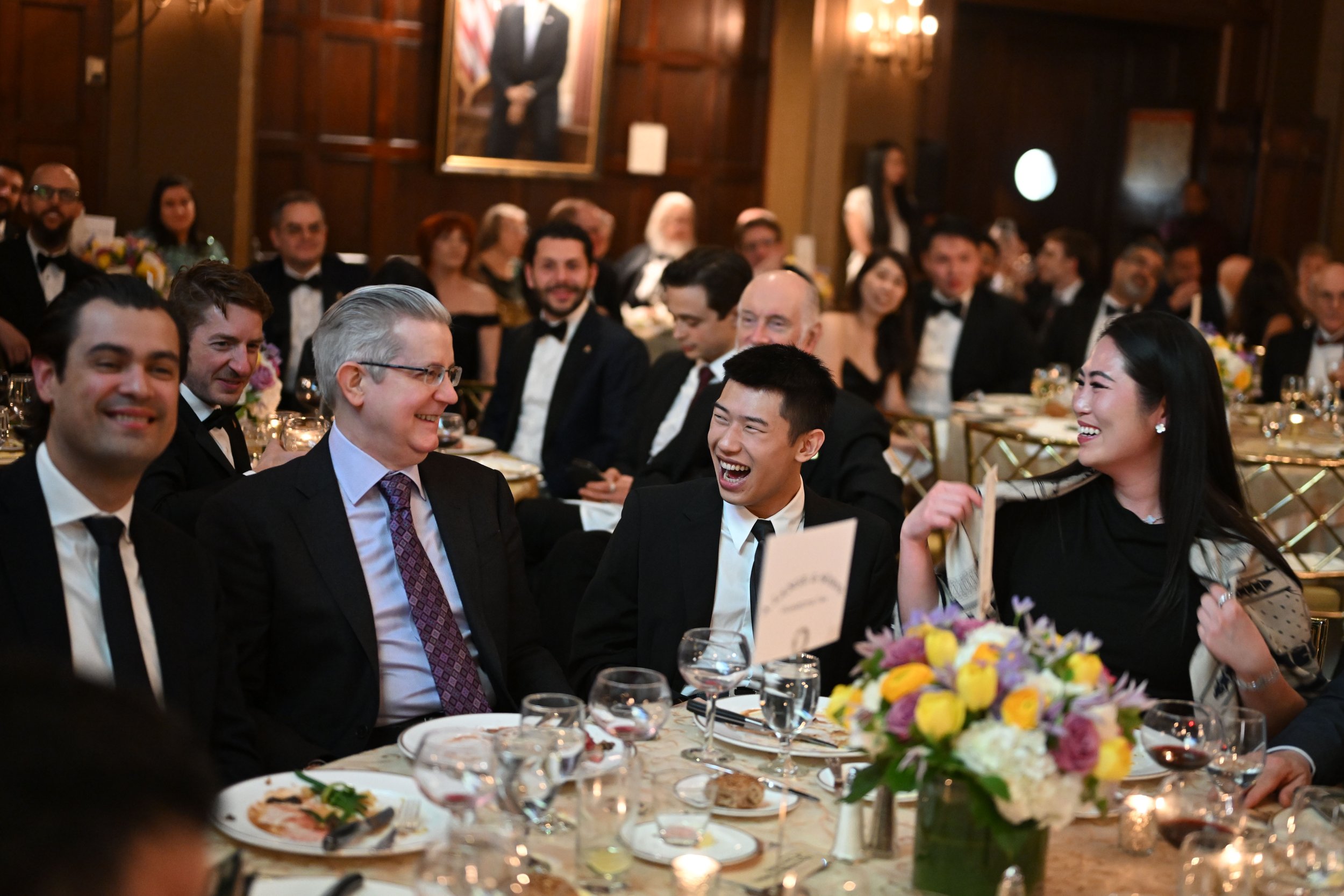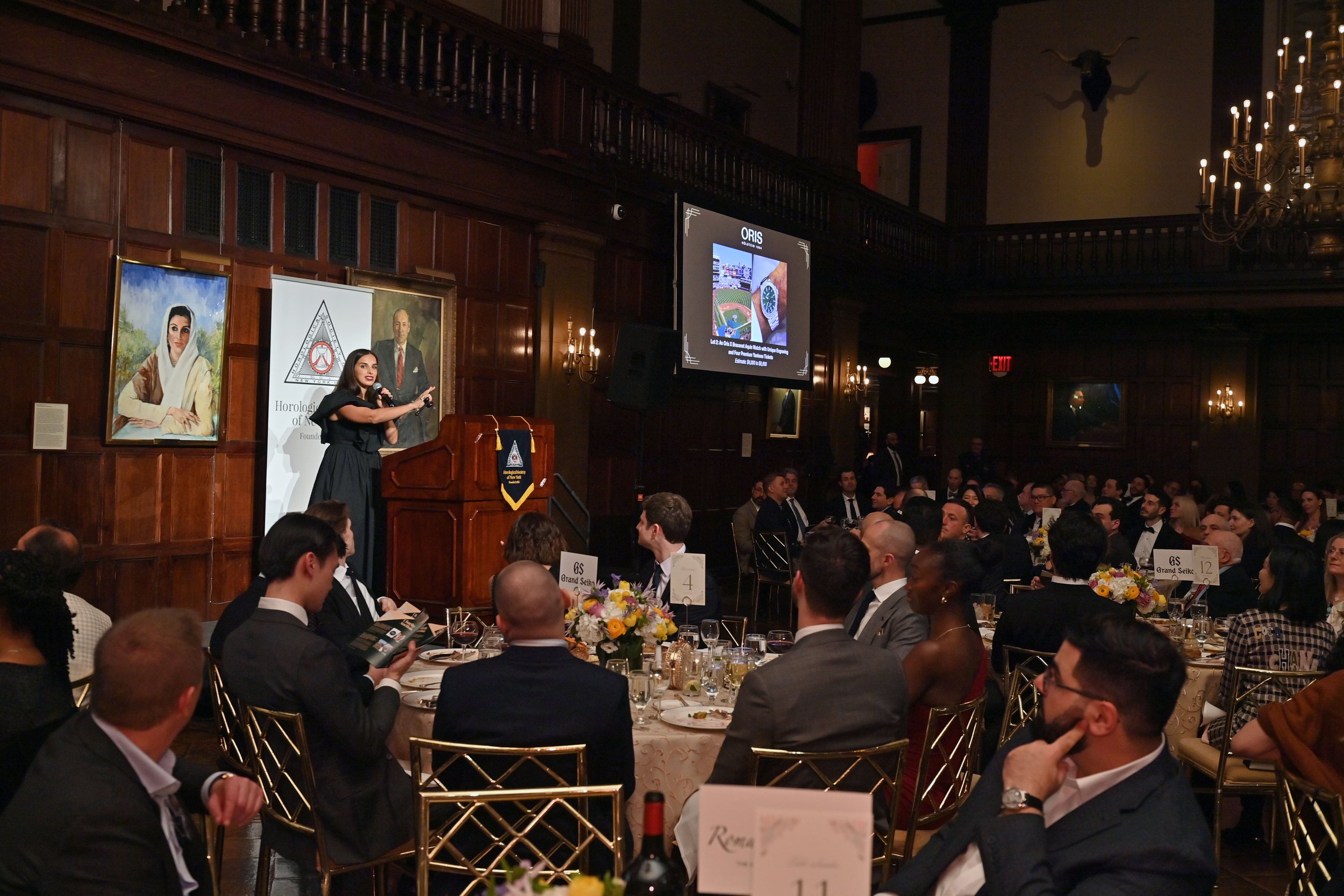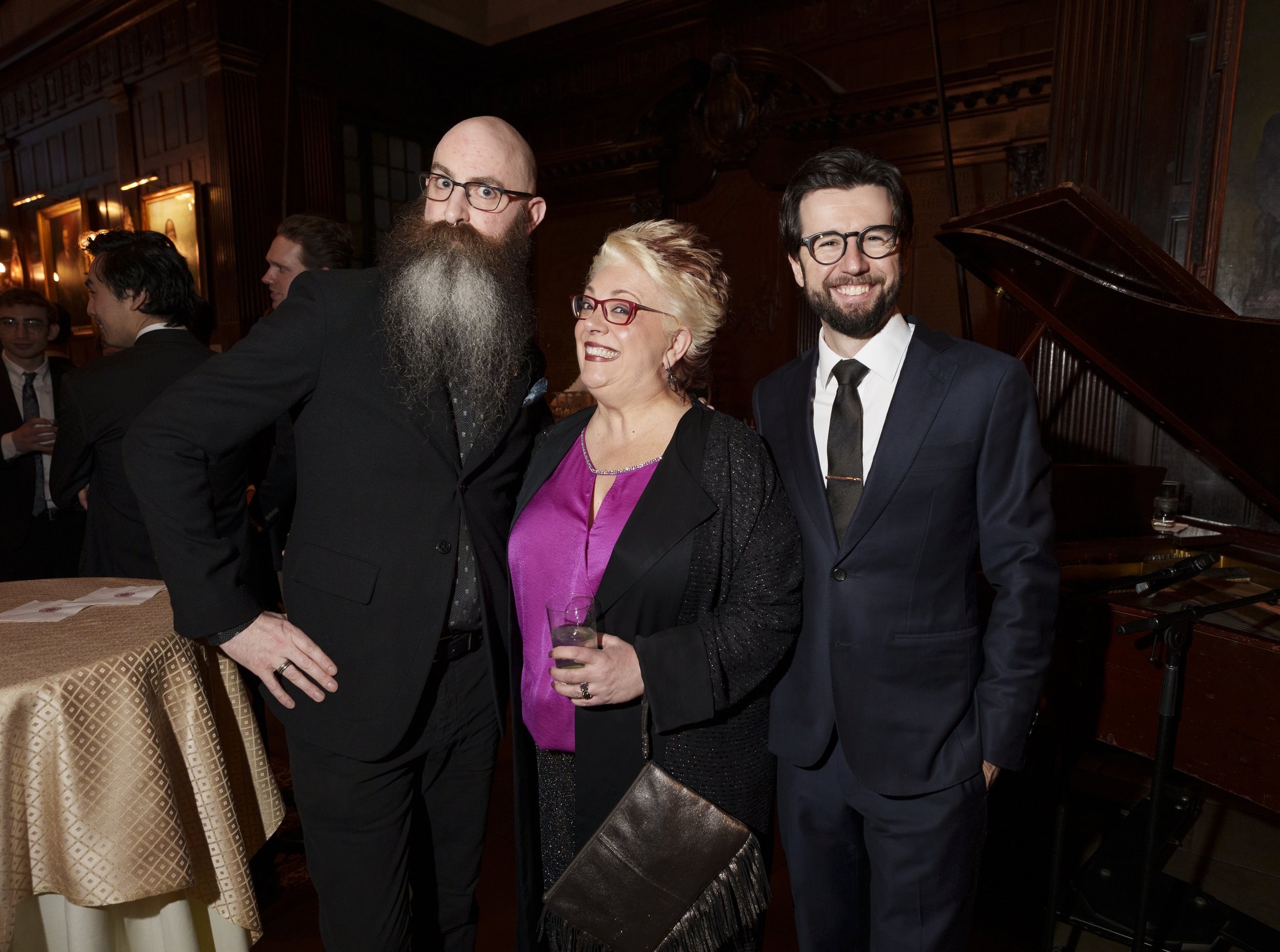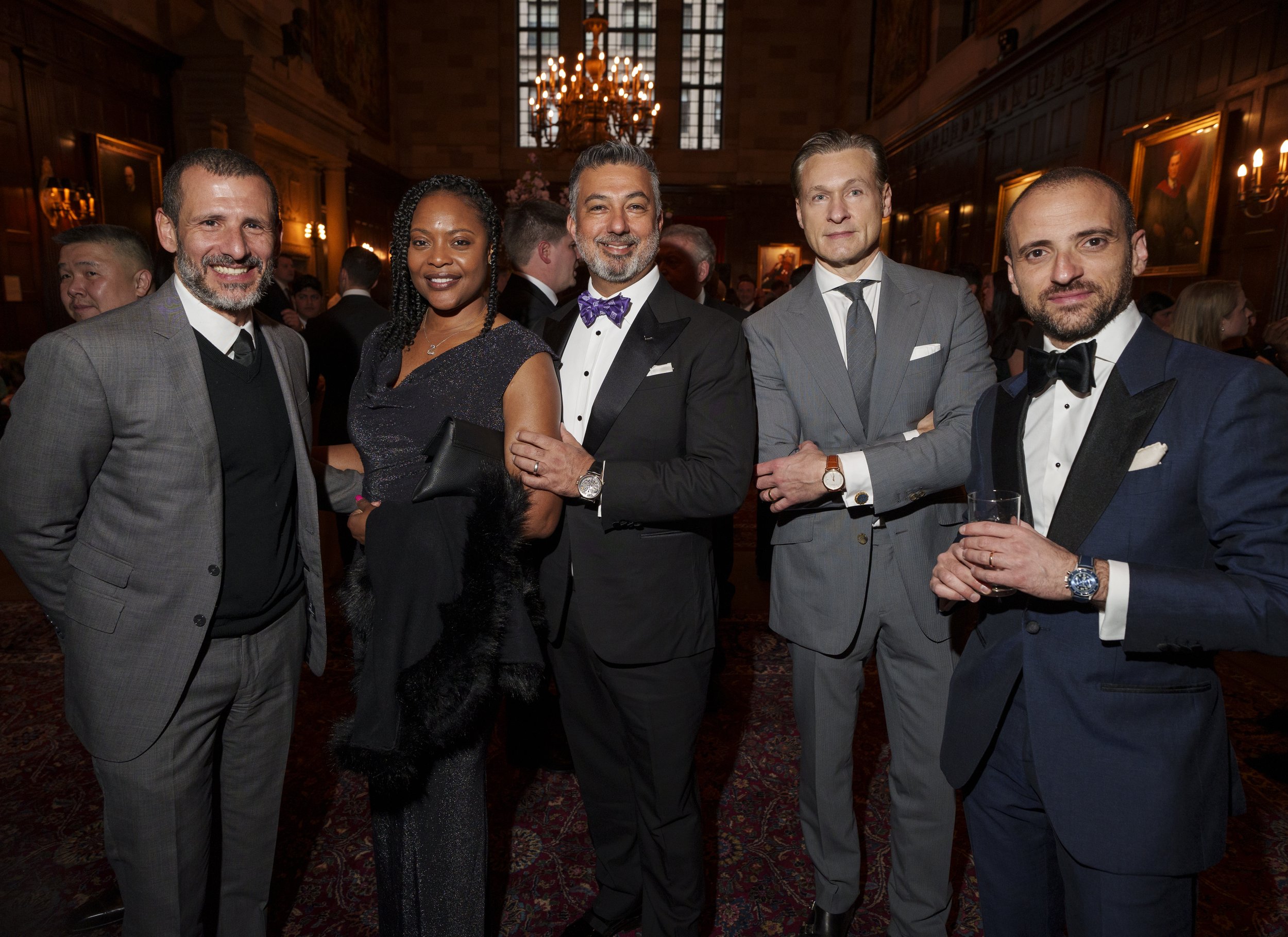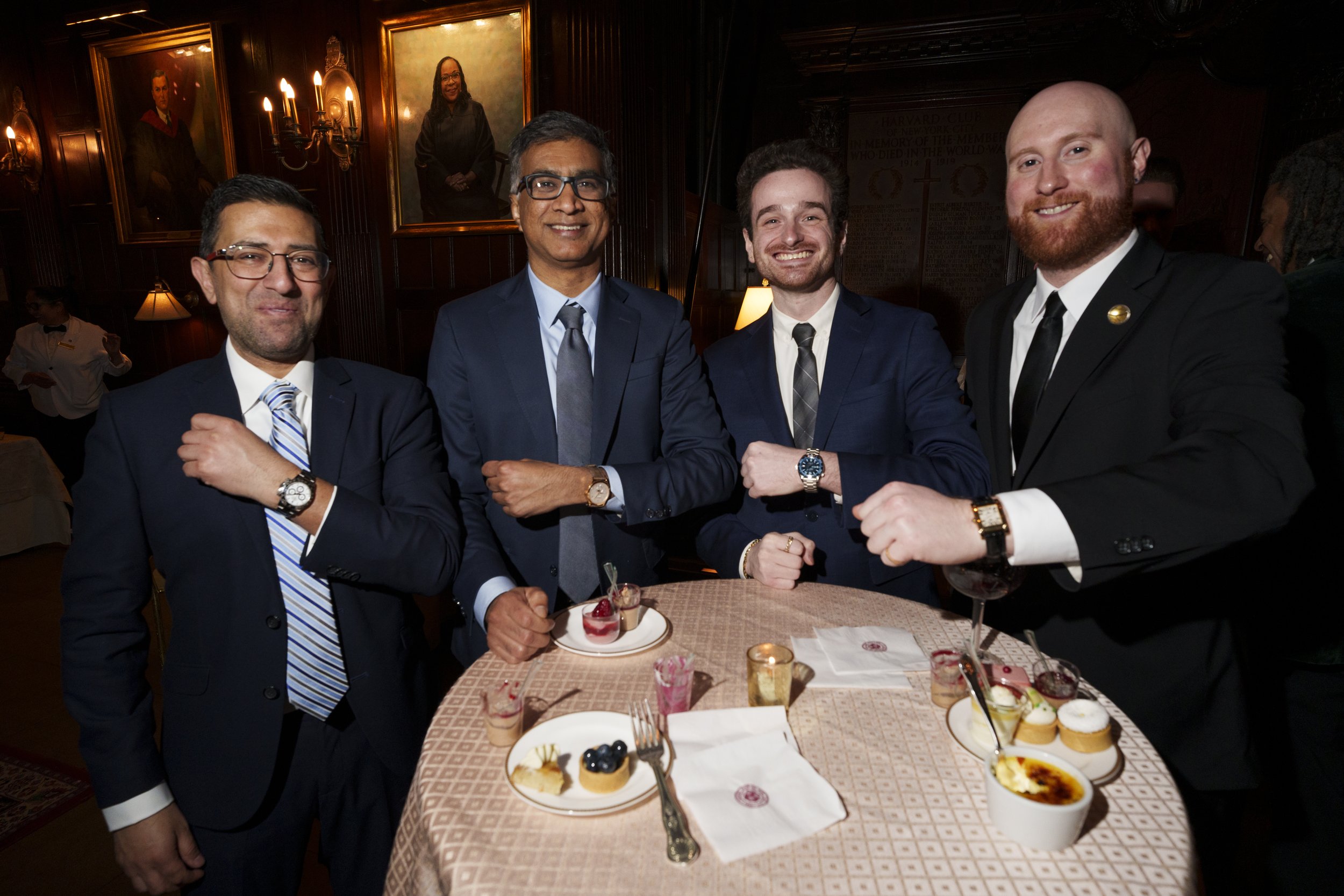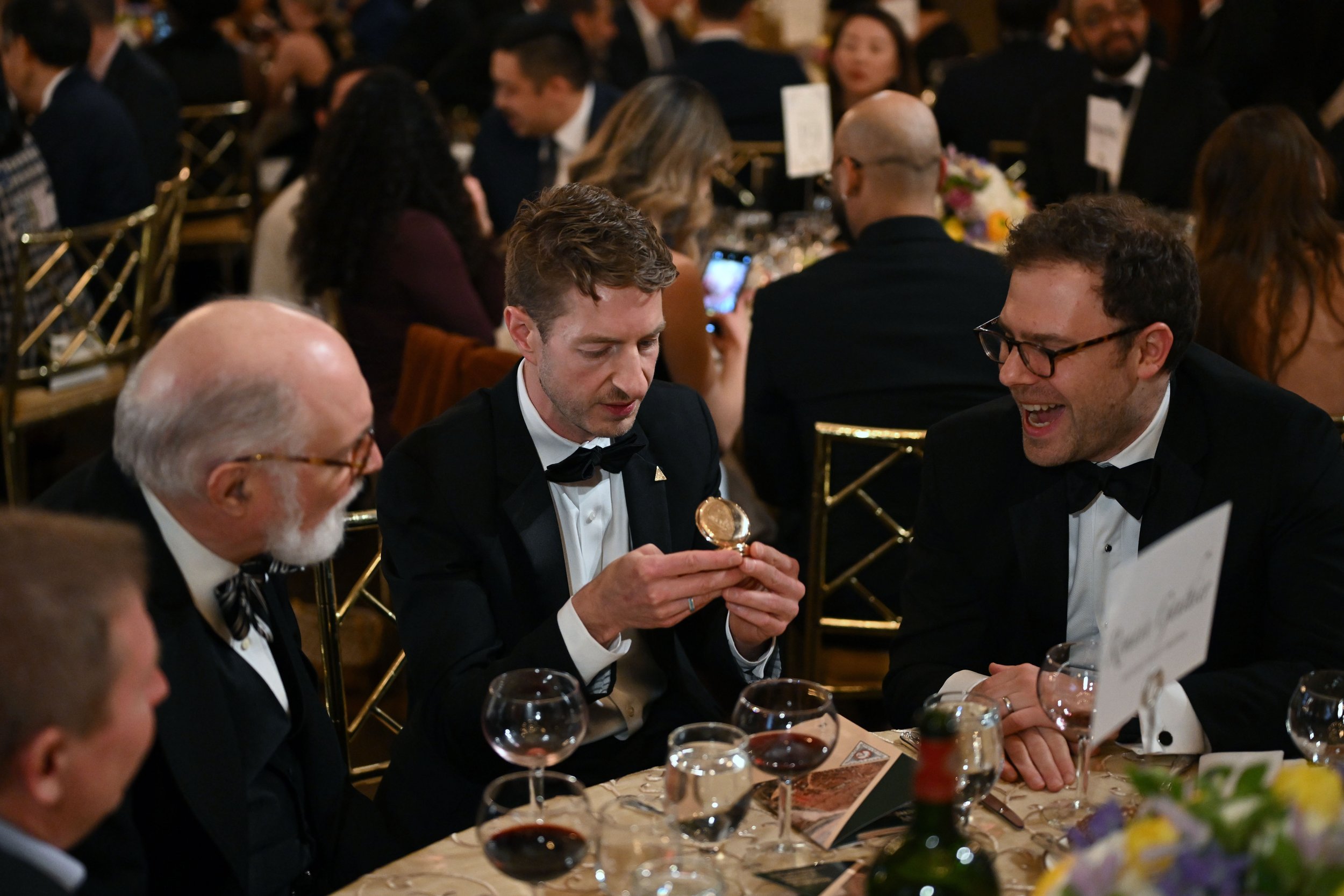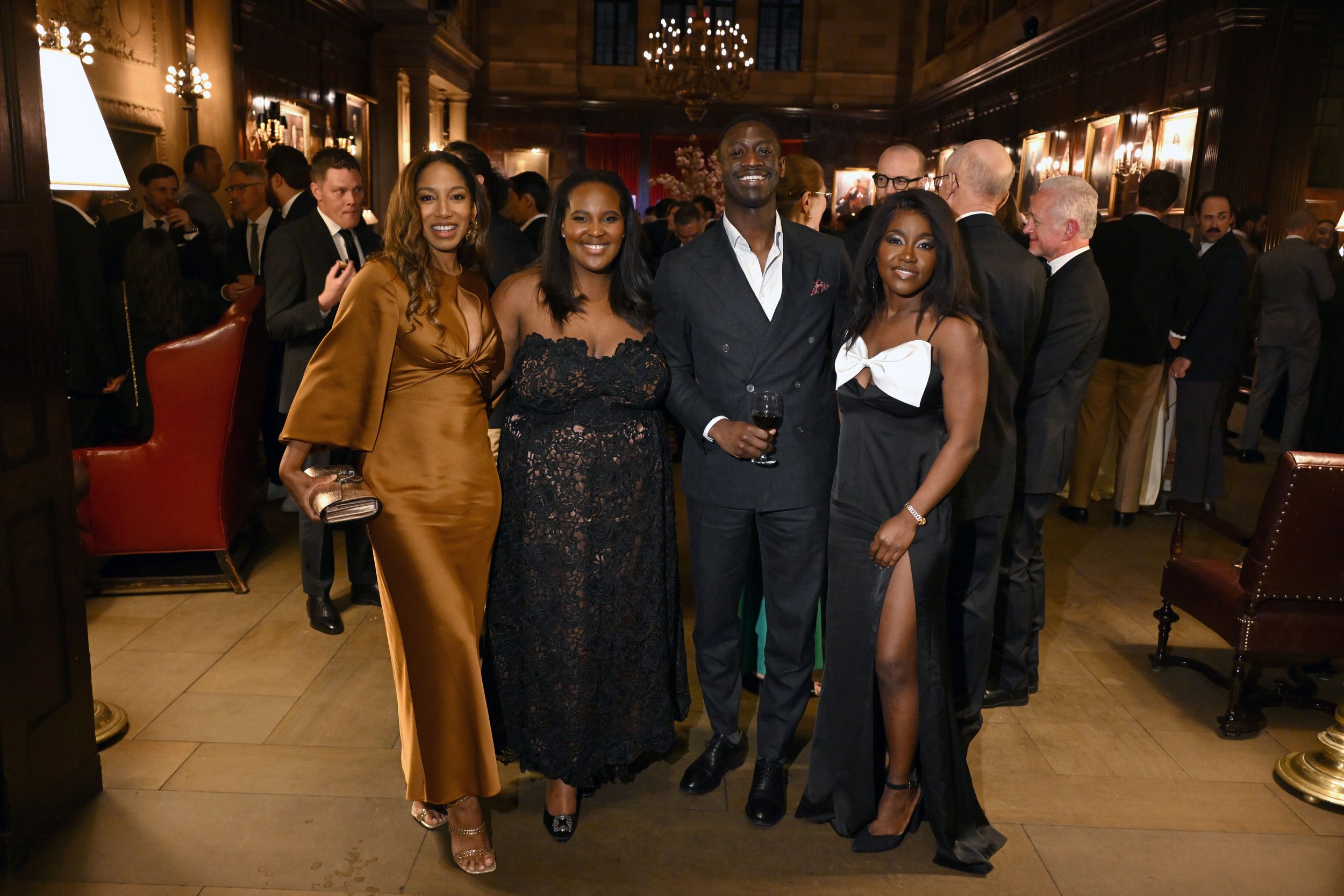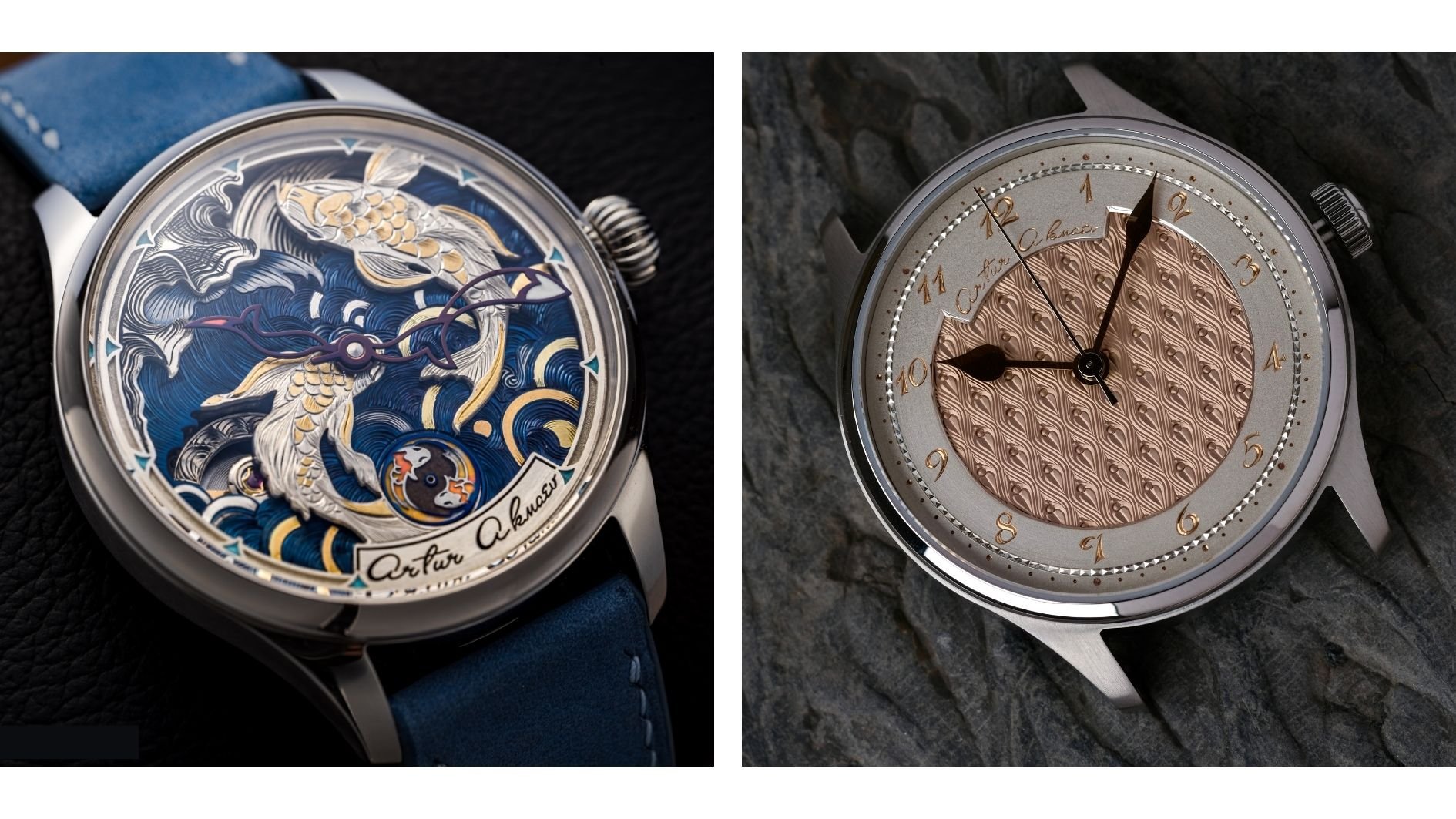Lifetime Membership Card Crafted by Voutilainen SA
The Horological Society of New York (HSNY) held its 158th anniversary Gala & Awards Ceremony on Saturday, April 6, 2024, where it awarded a record-breaking $150,000 in financial aid to 25 watchmaking students and four U.S. watchmaking schools, and raised an additional $113,000 toward its mission to advance the art and science of horology.
HSNY celebrated a night of philanthropy, glamour, and horology at its annual gala held once again at the historic Harvard Club of New York City across the street from the Society’s headquarters. The black-tie affair brought together 280 esteemed VIP attendees, community leaders, and passionate supporters, all uniting under one roof to champion horological initiatives.
Richard and Carol Heppner, Gala 2024
Highlights of the evening included guests of honor Carol Heppner, the great-granddaughter of HSNY’s founding president George Schmid, and actors Ben Ahlers and Simon Jones from HBO’s The Gilded Age, which has a storyline featuring HSNY.
Actors Ben Ahlers and Simon Jones from HBO’s The Gilded Age, Gala 2024.
Attendees also took part in a lively auction, where they had the chance to bid on items and experiences generously donated by HSNY sponsors and supporters. Lots included one-of-a-kind experiences and coveted watches, and of course, HSNY’s 2024 Lifetime Membership Card, which was auctioned by Phillips in Association with Bacs & Russo and sold for a hammer price of $18,000. The one-of-a-kind card, which grants lifetime membership privileges at HSNY, is an 18-karat gold hand-engraved card by Voutilainen SA and features a stunning design and brilliant guilloché pattern.
Philanthropic activities continued throughout the evening, with famed horologist and HSNY Trustee Roger Smith OBE who presented this year’s ceremonial giant check to watchmaking student Justin Baxter of the Lititz Watch Technicum. HSNY awarded a record $150,000 in scholarships and awards in 2024. (Please see below a full list of financial aid recipients.)
Roger Smith OBE presents a ceremonial giant check to watchmaking student Justin Baxter of the Lititz Watch Technicum, Gala 2024.
HSNY thanks all participating brands, sponsors, members and guests for their support! A save-the-date for HSNY’s 2025 Gala & Awards Ceremony is coming soon!
For more information about HSNY and how to get involved, please visit www.hs-ny.org.
Participating Brands
A. Lange & Söhne
Audemars Piguet
The Armoury
Blancpain
Breguet
Bulgari
Cierto Tequila
Collectability
Grand Seiko
H. Moser & Cie
HODINKEE
Jaeger-LeCoultre
Phillips in Association with Bacs & Russo
Roger W. Smith
Romain Gauthier
Ulysse Nardin
Vacheron Constantin
VomBoden - Importer of Fine Wines
Wempe
Watches of Switzerland
HSNY 2024 Financial Aid
Paolo Gonzales (Nicolas G. Hayek Watchmaking School)
Brandon McAnally (Paris Junior College Watchmaking Program)
Max Conser (North Seattle College Watch Technology Institute)
William Ready (North American Institute of Swiss Watchmaking)
Nicholas Amelung (Lititz Watch Technicum)
Gideon Bodley (Lititz Watch Technicum)
Itay Edry (Lititz Watch Technicum)
The Andre Bibeau Scholarship for Veteran Watchmaking Students (NEW IN 2024)
Seth Duncan (Lititz Watch Technicum)
The Benjamin Banneker Scholarship for Black Watchmaking Students
Christian Hill (Paris Junior College Watchmaking Program)
William Duncan (North American Institute of Swiss Watchmaking)
Brandon Hoorfard (Nicolas G. Hayek Watchmaking School)
Bryan Borquez (North American Institute of Swiss Watchmaking)
Michael Davanzo (North Seattle College Watch Technology Institute)
Youri Boggio-Pola (Lititz Watch Technicum)
Samuel Mallow (North Seattle College Watch Technology Institute)
Hudson Mickey (Lititz Watch Technicum)
Justin Baxter (Lititz Watch Technicum)
Lingxiao Guo (Lititz Watch Technicum)
Shannon White (Lititz Watch Technicum)
Greta Berckmueller (Lititz Watch Technicum)
C Luise Pitcairn (Lititz Watch Technicum)
Isabella Sosa (Paris Junior College Watchmaking Program)
Khalisah Tanner (North American Institute of Swiss Watchmaking)
Lezlie Soule (North Seattle College Watch Technology Institute)
Gem City College School of Horology
Veterans Watchmaker Initiative
North Seattle College Watch Technology Institute
Paris Junior College Watchmaking Program
The Oscar Waldan Scholarship for Jewish Watchmaking Students ($5,000 each)
Boris London (North Seattle College Watch Technology Institute)
# # #
ABOUT THE HOROLOGICAL SOCIETY OF NEW YORK
Founded in 1866, the Horological Society of New York (HSNY) is one of the oldest continuously operating horological associations in the world. Today, HSNY is a 501(c)(3) nonprofit organization dedicated to advancing the art and science of horology through education. Members are a diverse mix of watchmakers, clockmakers, executives, journalists, auctioneers, historians, salespeople and collectors, reflecting the rich nature of horology in New York City and around the world. http://hs-ny.org

